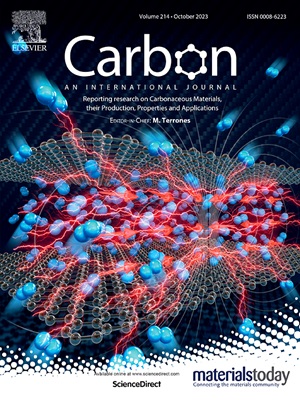Laser-induced graphene-Embedded electrospun PVDF-ZnO: A synergistic piezo-tribo nanogenerator for efficient energy harvesting
IF 11.6
2区 材料科学
Q1 CHEMISTRY, PHYSICAL
引用次数: 0
Abstract
This study presents development and performance evaluation of piezo-triboelectric hybrid nanogenerators (PTENGs) based on electrospun PVDF nanofibers modified with laser-induced graphene (LIG) and ZnO nanorods. By integrating piezoelectric and triboelectric mechanisms, the devices demonstrate significantly enhanced energy harvesting efficiency. The incorporation of LIG is expected to facilitate charge transport because of its conductive nature, while ZnO nanorods promotes β-phase crystallization in PVDF and enhances dipole alignment. X-ray diffraction and FTIR analyses confirms peak β-phase content of 84.7 % for PLZ-1.5 composition, while DSC reveals enhanced thermal stability and crystallinity (up to 86.4 %). SEM imaging shows improved fiber morphology, partial alignment, and reduced diameter distribution contributing to superior polarization efficiency. The direct piezoelectric charge coefficient (d33) reaches 50 pC/N for PLZ-1.5, indicating enhanced electromechanical coupling. The PLZ-1.5 exhibited highest output voltage (∼200 V) and power density (∼52 mW/cm3) that could glow 82 LEDs. Electrical output trends under varying load resistances confirm the critical role of nanofiller optimization in enhancing performance. These findings show importance of controlled nanofiller integration for maximizing efficiency of PTENGs. The optimized hybrid devices show great potential for application in self-powered sensors, wearable electronics, and next-generation portable energy harvesting systems.

激光诱导石墨烯嵌入电纺丝PVDF-ZnO:用于高效能量收集的协同压电-摩擦纳米发电机
本文研究了以激光诱导石墨烯(LIG)和ZnO纳米棒修饰的静电纺PVDF纳米纤维为基础的压电-摩擦混合纳米发电机(PTENGs)的开发和性能评价。通过集成压电和摩擦电机制,该装置显着提高了能量收集效率。由于LIG的导电性,其加入有望促进电荷传输,而ZnO纳米棒促进PVDF中的β相结晶并增强偶极子排列。x射线衍射和FTIR分析证实,PLZ-1.5成分的β相峰含量为84.7%,而DSC显示热稳定性和结晶度增强(高达86.4%)。扫描电镜成像显示纤维形态的改善、部分对准和直径分布的减小有助于提高极化效率。PLZ-1.5的直接压电电荷系数(d33)达到50 pC/N,表明机电耦合增强。PLZ-1.5具有最高输出电压(~ 200 V)和功率密度(~ 52 mW/cm3),可以发光82个led。不同负载电阻下的电输出趋势证实了纳米填料优化在提高性能方面的关键作用。这些发现表明,控制纳米填料集成对于最大限度地提高pteng效率的重要性。优化后的混合器件在自供电传感器、可穿戴电子设备和下一代便携式能量收集系统中显示出巨大的应用潜力。
本文章由计算机程序翻译,如有差异,请以英文原文为准。
求助全文
约1分钟内获得全文
求助全文
来源期刊

Carbon
工程技术-材料科学:综合
CiteScore
20.80
自引率
7.30%
发文量
0
审稿时长
23 days
期刊介绍:
The journal Carbon is an international multidisciplinary forum for communicating scientific advances in the field of carbon materials. It reports new findings related to the formation, structure, properties, behaviors, and technological applications of carbons. Carbons are a broad class of ordered or disordered solid phases composed primarily of elemental carbon, including but not limited to carbon black, carbon fibers and filaments, carbon nanotubes, diamond and diamond-like carbon, fullerenes, glassy carbon, graphite, graphene, graphene-oxide, porous carbons, pyrolytic carbon, and other sp2 and non-sp2 hybridized carbon systems. Carbon is the companion title to the open access journal Carbon Trends. Relevant application areas for carbon materials include biology and medicine, catalysis, electronic, optoelectronic, spintronic, high-frequency, and photonic devices, energy storage and conversion systems, environmental applications and water treatment, smart materials and systems, and structural and thermal applications.
 求助内容:
求助内容: 应助结果提醒方式:
应助结果提醒方式:


